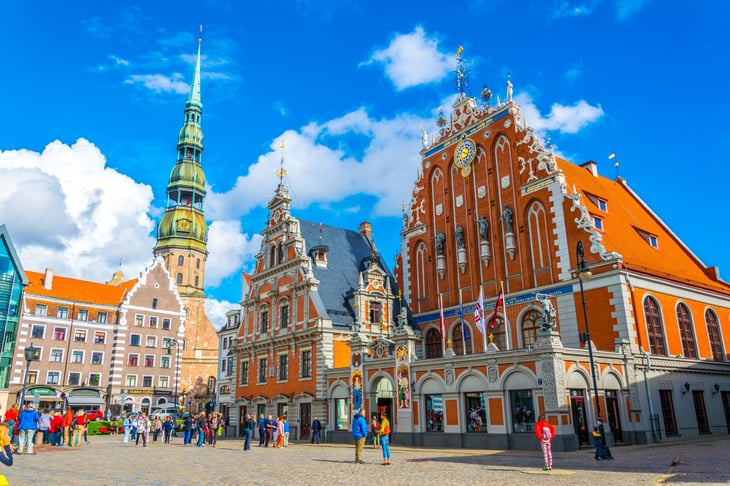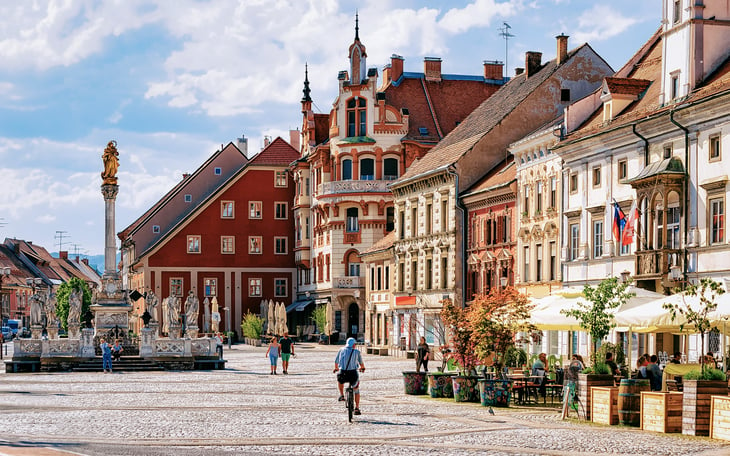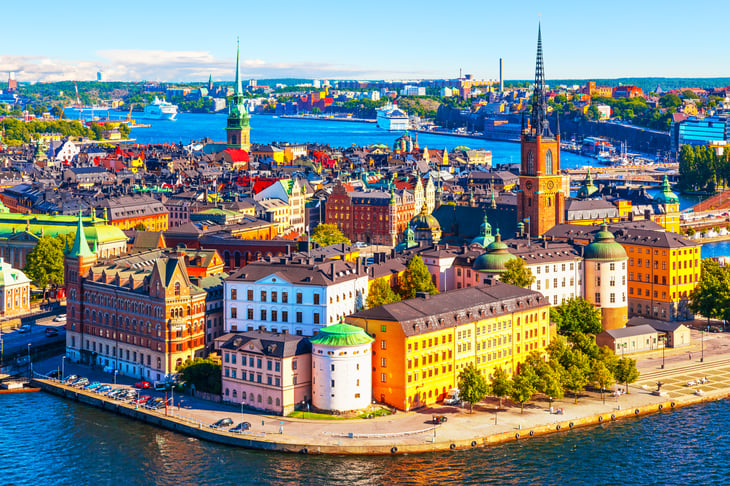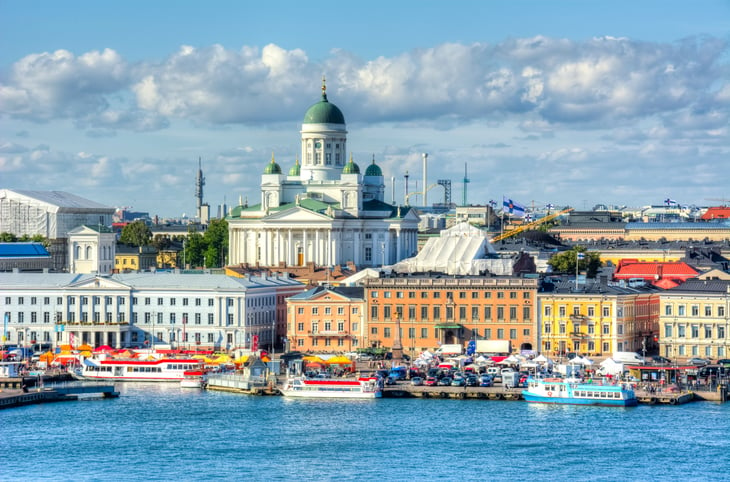
Have you ever wondered how the retirement systems in other countries compare with those in the U.S.?
Blacktower Financial Management, a wealth management company with offices in 15 countries, recently ranked the best countries for pensions.
However, what Americans typically think of as a pension doesn’t exactly square with that of the analysis — which uses “pension” as a blanket term to include the variety of retirement systems employed across the world. In some cases, those systems may sound similar to what we call Social Security, 401(k)s, individual retirement accounts and so on.
The ranking is based on data from the Organisation for Economic Co-operation and Development, or OECD, though Blacktower excluded countries for which not all considered metrics were available.
Ready to check out how retirement benefits work outside the U.S.? Here are the best countries for pensions, according to Blacktower.
10. Israel

Public spending on pensions: 5.3% of the country’s gross domestic product (GDP)
Average retirement age: 62
Contribution rate: 13.81% of the average wage
Participation rate: 80.7% of the working population
More than half of Israeli pension plans are through work, though personal plans are also common, according to the OECD.
At least 6% of employee pay and at least a 6.5% employer contribution fund workplace plans, according to The Jerusalem Post.
9. Switzerland

Public spending on pensions: 9.8% of the country’s GDP
Average retirement age: 65
Contribution rate: 16.6% of the average wage
Participation rate: 73.6% of the working population
Switzerland’s retirement system includes both a state pension known as Old Age and Survivor’s Insurance (OASI) and a mandatory work pension for those who are 17 or older and earn at least 21,330 Swiss francs (roughly $23,000 U.S. dollars) per year. Both types are jointly funded by employees and employers.
There are options to contribute to private pension funds as well, but it’s not required or particularly common: 90% of all pension assets in Switzerland are in work plans, according to the OECD.
8. Czech Republic

Public spending on pensions: 8.2% of the country’s GDP
Average retirement age: 65
Contribution rate: 28% of the average wage
Participation rate: 52.1% of the working population
Czech pensions are paid monthly, with both a fixed-rate component — 3,550 koruna (about $162 U.S. dollars) as of 2021 — and a percentage amount that varies from person to person, according to the European Commission. The latter is based on a worker’s number of insured working years and average earnings.
7. Greece

Public spending on pensions: 17.3% of the country’s GDP
Average retirement age: 62
Contribution rate: 20% of the average wage
Participation rate: 1.3% of the working population
Greek pensioners also enjoy a two-component system, with part coming straight from the state budget and part calculated based on individual contributions paid since 2002, according to the European Commission.
However, Greek retirees haven’t necessarily been getting their full due. In 2020, a Greek court found some pension cuts imposed in 2015 and 2016 were made illegally, Reuters reported.
6. Latvia

Public spending on pensions: 7.4% of the country’s GDP
Average retirement age: 65
Contribution rate: 20% of the average wage
Participation rate: 100% of the working population
Latvia’s social insurance program is gradually raising its retirement age to 65 and its required number of insured working years to 20 by 2025, according to the European Commission. Currently, workers must contribute for 15 years and can retire and begin collecting this type of pension at age 64.
5. France

Public spending on pensions: 15% of the country’s GDP
Average retirement age: 65
Contribution rate: 27.5% of the average wage
Participation rate: 24.5% of the working population
People in France generally can apply for a pension from age 62, although they can apply as early as 57 at a penalty or delay beyond 62 for an increased payment, according to the European Commission. Whether the recipient had children, and how many, is one interesting factor in the amount calculation.
4. Slovenia

Public spending on pensions: 10.9% of the country’s GDP
Average retirement age: 62
Contribution rate: 24.35% of the average wage
Participation rate: 39.1% of the working population
Slovenes generally become eligible for a pension between ages 60 and 65, depending on how long they’ve contributed to the system, according to the European Commission. The eligibility age can also be reduced due to a number of factors, including number of children raised, required military service, teenage employment history, health circumstances and a history of working in a dangerous environment.
“The lowest pensionable earnings amount to 76.5% of the average monthly wage in Slovenia in the previous calendar year, minus tax and contributions,” the European Commission says.
3. Sweden

Public spending on pensions: 8.2% of the country’s GDP
Average retirement age: 65
Contribution rate: 21.71% of the average wage
Participation rate: 100% of the working population
The Swedish retirement system includes public, work and personal pensions, according to the European Commission. The public pension is available to everyone who has lived and worked in the country. About 90% of Swedish employees also receive a pension through work. Personal pensions are voluntary.
2. Poland

Public spending on pensions: 11.2% of the country’s GDP
Average retirement age: 65
Contribution rate: 27.52% of the average wage
Participation rate: 66.2% of the working population
All Polish workers, as well as certain social groups such as soldiers and clergy, receive retirement pensions, according to the European Commission. Employee and employer contributions fund this system.
1. Finland

Public spending on pensions: 13.4% of the country’s GDP
Average retirement age: 67.9
Contribution rate: 24.4% of the average wage
Participation rate: 89.8% of the working population
Finland has the finest pension system in the world, according to Blacktower Financial Management.
All entrepreneurs and employees are eligible for an earnings-related pension, according to the European Commission, and those who haven’t worked may receive a national pension based primarily upon how long they have lived in the country.
All senior citizens living in Finland are guaranteed a minimum pension level.





Add a Comment
Our Policy: We welcome relevant and respectful comments in order to foster healthy and informative discussions. All other comments may be removed. Comments with links are automatically held for moderation.